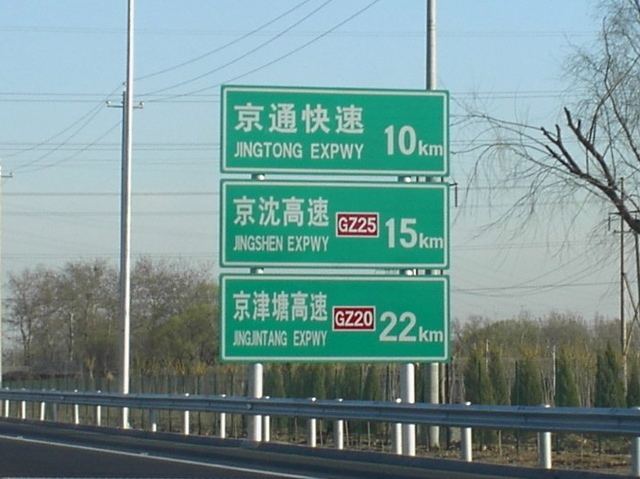Unit system metric Symbol km | 1 km in ... ... is equal to ... | |
 | ||
SI units 7003100000000000000♠1000 m imperial/US units 7002999998081280000♠0.62137 mi 7002999987840000000♠3280.8 ft | ||
The kilometre (International spelling as used by the International Bureau of Weights and Measures; SI symbol: km; /ˈkɪləmiːtər/ or /kɪˈlɒmɪtər/) or kilometer (American spelling) is a unit of length in the metric system, equal to one thousand metres (kilo- being the SI prefix for 7003100000000000000♠1000). It is now the measurement unit used officially for expressing distances between geographical places on land in most of the world; notable exceptions are the United States and the road network of the United Kingdom where the statute mile is the official unit used.
Contents
k (pronounced /keɪ/) is occasionally used in some English-speaking countries as an alternative for the word kilometre in colloquial writing and speech. A slang term for the kilometre in the US military is klick.
Pronunciation
There are two common pronunciations for the word.
The former follows a pattern in English whereby metric units are pronounced with the stress on the first syllable, and the pronunciation of the actual base unit does not change irrespective of the prefix. It is generally preferred by the British Broadcasting Corporation (BBC) and the Australian Broadcasting Corporation (ABC).
Many scientists and other users, particularly in countries where the metric system is not widely used, use the pronunciation with stress on the second syllable. The latter pronunciation follows the stress pattern used for the names of measuring instruments (such as micrometer, barometer, thermometer, tachometer and speedometer). The problem with this reasoning, however, is that the word meter in those usages refers to a measuring device, not a unit of length. The contrast is even more obvious in countries using the British rather than American spelling of the word metre.
When Australia introduced the metric system in 1975, the first pronunciation was declared official by the government's Metric Conversion Board. However, the Australian prime minister at the time, Gough Whitlam, insisted that the second pronunciation was the correct one because of the Greek origins of the two parts of the word.
History
By the 8 May 1790 decree, the Constituent assembly ordered the French Academy of Sciences to develop a new measurement system. In August 1793, the French National Convention decreed the metre as the sole length measurement system in the French Republic. The first name of the kilometre was "Millaire". Although the metre was formally defined in 1799, the myriametre (7004100000000000000♠10000 metres) was preferred to the "kilometre" for everyday use. The term "myriamètre" appeared a number of times in the text of Develey's book Physique d'Emile: ou, Principes de la science de la nature, (published in 1802), while the term kilometre only appeared in an appendix. French maps published in 1835 had scales showing myriametres and "lieues de Poste" (Postal leagues of about 7003428800000000000♠4288 metres).
The Dutch, on the other hand, adopted the kilometre in 1817 but gave it the local name of the mijl. It was only in 1867 that the term "kilometer" became the only official unit of measure in the Netherlands to represent 7003100000000000000♠1000 metres.
Two German textbooks dated 1842 and 1848 respectively give a snapshot of the use of the kilometre across Europe - the kilometre was in use in the Netherlands and in Italy and the myriametre was in use in France.
In 1935, the International Committee for Weights and Measures (CIPM) officially abolished the prefix "myria-" and with it the "myriametre", leaving the kilometre as the recognised unit of length for measurements of that magnitude.
United Kingdom
In the United Kingdom, road signs show distances in miles and location marker posts that are used for reference purposes by road engineers and emergency services show distance references in unspecified units which are kilometre-based. The advent of the mobile phone has been instrumental in the British Department for Transport authorising the use of driver location signs to convey the distance reference information of location marker posts to road users should they need to contact the emergency services.
United States
In the US, the National Highway System Designation Act of 1995 prohibits the use of federal-aid highway funds to convert existing signs or purchase new signs with metric units. The Executive Director of the US Federal Highway Administration, Jeffrey Paniati, wrote in a 2008 memo: "Section 205(c)(2) of the National Highway System (NHS) Designation Act of 1995 prohibited us from requiring any State DOT [Department of Transport] to use the metric system during project development activities. Although the State DOT's had the option of using metric measurements or dual units (metrics/inch-pounds), all of them abandoned metric measurements and reverted to sole use of inch-pound values." The Manual on Uniform Traffic Control Devices since 2000 is published in both metric and American Customary Units. (See also Metrication in the United States.)
Kilometre records
Some sporting disciplines feature 7003100000000000000♠1000 m (one-kilometre) races in major events (such as the Olympic Games), but in other disciplines, even though world records are catalogued, the one kilometre event remains a minority event. The world records for various sporting disciplines are:
